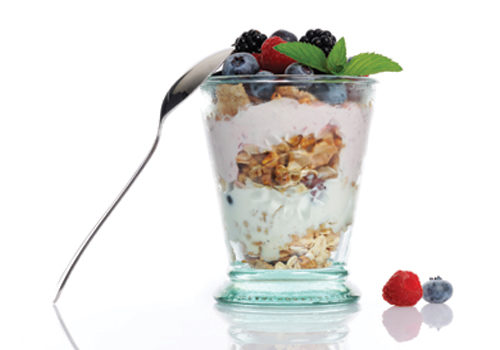Those determined to flip the script on their digestive woes will first need to learn which types of food are up to the task. They’ll want to know how, by changing or adding to their diet, they can make their entire experience with food go more smoothly. Possessing that knowledge, and the product offerings to match, will make you the ally of such customers in their quest to digest.
Your Stomach Will Thank You
The practice of eating to maintain and promote digestive health rests on several key principles, perhaps the most crucial of which is to get your fiber. Most people are off to a bad start. “Americans are eating less than half the recommended amount of dietary fiber each day. Do we wonder why constipatio n is the most common GI complaint in the United States?” says Brenda Watson, president and founder of ReNew Life Formulas, Palm Harbor, FL.
n is the most common GI complaint in the United States?” says Brenda Watson, president and founder of ReNew Life Formulas, Palm Harbor, FL.
Here to help us begin a discussion of the ins and outs of fiber intake is Heather Van Vorous, founder and CEO of Heather’s Tummy Care, Seattle, WA, and author of Eating for IBS and The First Year: IBS. The information provided by Van Vorous is drawn from www.helpforibs.com and her book Eating for IBS (1).
Referring to irritable bowel syndrome (IBS), Van Vorous says soluble fiber can help stabilize symptoms, while insoluble fiber can trigger them. She calls soluble fiber the single greatest dietary aid to IBS sufferers, both for improving symptoms and keeping them at bay in the first place. “Here’s the kicker. Soluble fiber is NOT typically found in foods most people think of as ‘fiber,’ such as bran or raw leafy green vegetables, but is actually found in foods commonly thought of as ‘starches,’” she says.
Examples of starch-based foods that can soothe IBS, says Van Vorous, are rice, white breads such as French or sourdough (but not whole wheat or whole grain), potatoes, carrots, mushrooms and bananas. “Soluble fiber is special because unlike any other food category, it soothes and regulates the digestive tract, stabilizes the intestinal contractions resulting from the gastrocolic reflex, and normalizes bowel function to prevent and relieve both diarrhea and constipation,” she says.
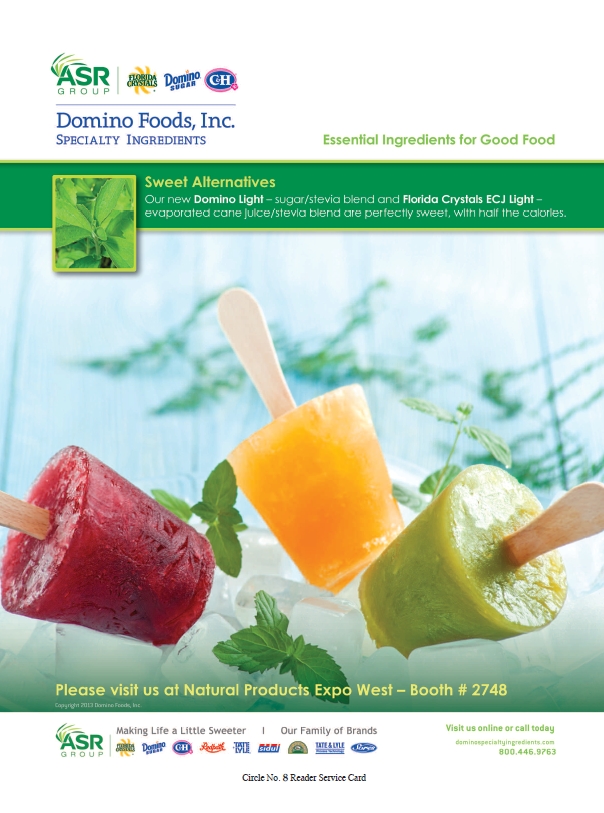 Normalization of colon contractions (speeding them up or slowing them down) helps prevent the violent spasms that result in the cramping pains of the lower abdomen characteristic of IBS, according to Van Vorous. This action makes soluble fiber perfectly suited to being consumed on an empty stomach. “The only foods you want to trigger your gastrocolic reflex are soluble fiber, as that’s the only way to keep those contractions normal,” she explains.
Normalization of colon contractions (speeding them up or slowing them down) helps prevent the violent spasms that result in the cramping pains of the lower abdomen characteristic of IBS, according to Van Vorous. This action makes soluble fiber perfectly suited to being consumed on an empty stomach. “The only foods you want to trigger your gastrocolic reflex are soluble fiber, as that’s the only way to keep those contractions normal,” she explains.
Bran, whole grains, raw fruits and vegetables, legumes, seeds and nuts all provide insoluble fiber. “The healthiest foods in the world are high in insoluble fiber, and what everyone should be eating as much of as possible,” says Van Vorous. For all its good, however, insoluble fiber can sometimes spell trouble for those with IBS, as it is a powerful stimulant of the gastrointestinal (GI) tract.
But insoluble fiber has its place in normal digestion. “I like to use the kitchen sponge as a nice analogy here. Insoluble fiber is like the green scrubber side of the sponge. It helps to bulk the stool and essentially ‘scrub’ the walls of the intestines as it moves through,” says Watson. Bulking also promotes the peristalsis, or contraction, of the intestinal walls that helps to move digestion along. So, the dilemma for some is finding a way to incorporate these healthy and essential foods into the diet without causing digestive distress.
Van Vorous explains that if a plant-based food is stringy  and/or rough, or has a tough skin, hull, peel, pod or seeds, it is likely a rich source of insoluble fiber. To make it easier to digest, she offers some practical suggestions: dicing and cooking vegetables into a low-fat sauce to add to pasta, stir-frying veggies into rice or blending fresh fruit into a smoothie and drinking it after a bowl of oatmeal. The theme is that for those who may react poorly to insoluble fiber, combining it with the ingestion of soluble fiber, and slowly increasing intake is the way to go, according to Van Vorous. Peeling, chopping, cooking and pureeing can often help minimize any uncomfortable impact that insoluble fiber may have.
and/or rough, or has a tough skin, hull, peel, pod or seeds, it is likely a rich source of insoluble fiber. To make it easier to digest, she offers some practical suggestions: dicing and cooking vegetables into a low-fat sauce to add to pasta, stir-frying veggies into rice or blending fresh fruit into a smoothie and drinking it after a bowl of oatmeal. The theme is that for those who may react poorly to insoluble fiber, combining it with the ingestion of soluble fiber, and slowly increasing intake is the way to go, according to Van Vorous. Peeling, chopping, cooking and pureeing can often help minimize any uncomfortable impact that insoluble fiber may have.
Gerry Morrison, founder and CEO of Active D’Lites, North Logan, UT, notes that all types of food should be consumed in moderation for best results. He says, “Fiber, when taken in large quantities, can cause upsets, so it’s important to eat the right amounts and be consistent when you find foods that work for your digestive wellness.”
Make sure your customers know about the digestive health benefits that almonds can provide. They have been found in research to serve as prebiotics, or fuel for beneficial bacteria (also known as probiotics; more on these soon). Finely ground almonds were found in one study to increase the levels of certain probiotics in the gut, and it is speculated that the lipid content in the almonds may be the source of food for these beneficial bacteria (2).
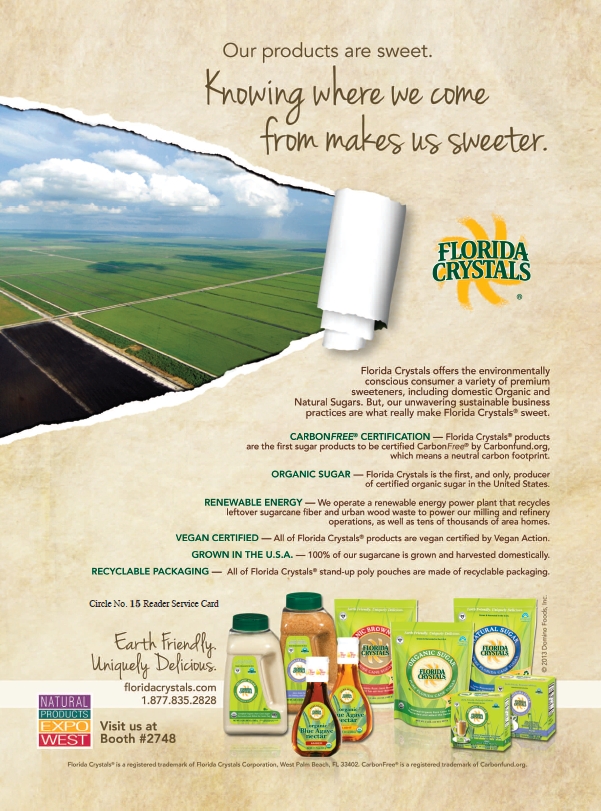 Also promoting digestive health are omega-3 fatty acids, so Watson suggests people turn to cold water fish high in this healthful nutrient. “Sardines, anchovies and salmon are some of the best choices, since they are high in omega-3, yet lower in contaminants such as mercury,” she says. Omega-3s help to lower inflammation, which is a common culprit in digestive disorders. Watson notes that even IBS is being linked more and more with inflammation than it has been in the past.
Also promoting digestive health are omega-3 fatty acids, so Watson suggests people turn to cold water fish high in this healthful nutrient. “Sardines, anchovies and salmon are some of the best choices, since they are high in omega-3, yet lower in contaminants such as mercury,” she says. Omega-3s help to lower inflammation, which is a common culprit in digestive disorders. Watson notes that even IBS is being linked more and more with inflammation than it has been in the past.
For those with food intolerances or sensitivities, specific solutions to the digestive discomfort caused by certain foods may be sought. Katie Cavuto Boyle, R.D., nutrition ambassador for GO Veggie! explains the case of lactose intolerance, wherein the enzyme lactase is not produced adequately, and symptoms like bloating, gas, cramps, diarrhea and nausea ensue whenever dairy is consumed. Small amounts of lactose may not cause an issue, she says, but eliminating dairy from the diet is the best way to avoid the problem entirely.
But for those unsatisfied with that difficult option, Cavuto Boyle offers hope. “Fortunately, being lactose intolerant does not mean you cannot enjoy your favorite foods. There are a number of lactose- and dairy-free options available on supermarket shelves,” she says. Such products include dairy-free milk alternatives like coconut, almond, soy or hemp, as well as sliced, shredded and grated dairy-free cheese offerings like those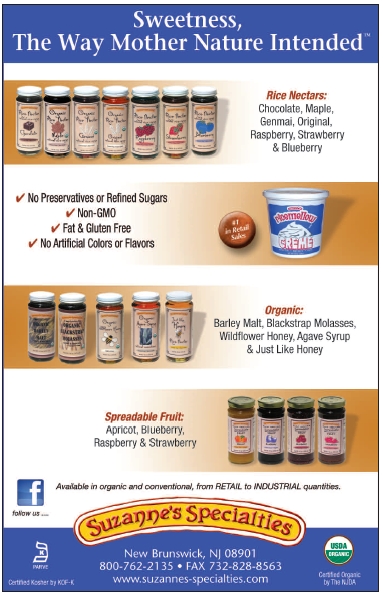 from her company. In this way, the flavor, texture and common uses of dairy products can be enjoyed by everyone. After all, you can’t have grilled cheese without the cheese, or cereal without the milk, dairy-free or otherwise.
from her company. In this way, the flavor, texture and common uses of dairy products can be enjoyed by everyone. After all, you can’t have grilled cheese without the cheese, or cereal without the milk, dairy-free or otherwise.
There are other benefits to going dairy free, or limiting it in one’s diet. Reducing or avoiding dairy intake can help with weight loss and in the prevention of heart disease, Cavuto Boyle says, as full-fat dairy can be high in saturated fat and calories. Dairy is not, of course, the only source of calcium, as Cavuto Boyle points out: seeds, beans, soy and green foods (as well as many dairy alternatives through fortification) contain adequate calcium. She cites the example of some of her company’s products, ¼ cup of which contain 25% of one’s daily value (DV) for calcium.
Fermented foods that can help supply probiotics to the gut are also important for digestive health, Watson says. She offers sauerkraut, kimchee and kefir as examples, but cautions that consumers need to read the label. Many foods of this type are pasteurized, killing off any beneficial microbes in the process. This includes many commercially available yogurts, to which probiotics are added before pasteurization. But if your fermented food says, “Contains live (or active) cultures,” on the label, then it’s probably safe to assume it does, Watson says.
Kefir and yogurt have ancient roots as havens for the growth of probiotic bacteria, according to Nancy Van Brasch Hamren, office manager and namesake of Nancy’s Yogurt, made by Springfield Creamery, Eugene, OR. These bacteria take up residence in the GI tract and protect us, she 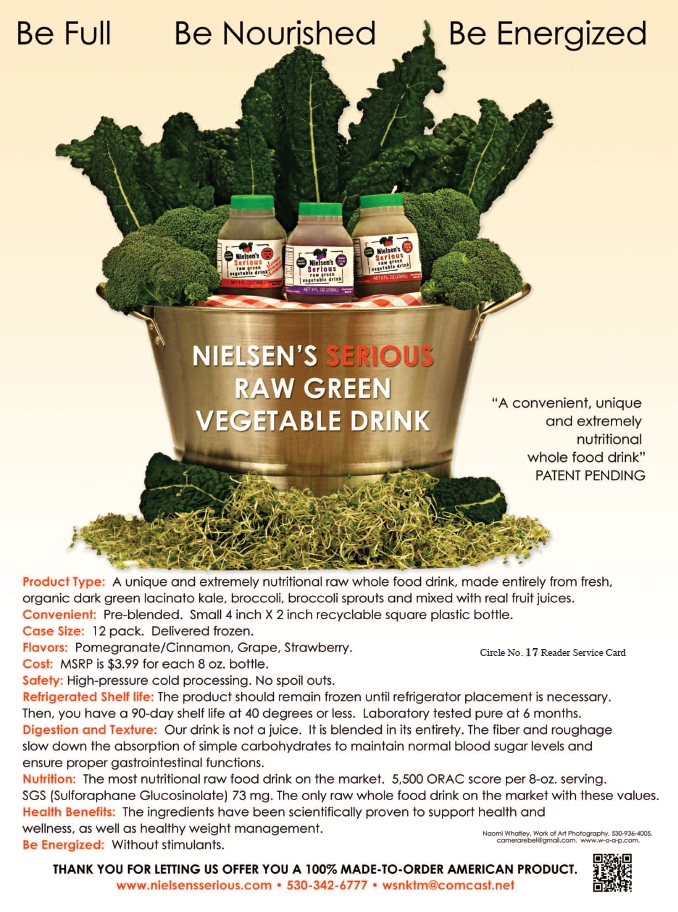 says, adding, “There are numerous clinical trials that show these bacteria, and the calcium in milk, are soothing to the mucous membrane, which is our first line of defense.”
says, adding, “There are numerous clinical trials that show these bacteria, and the calcium in milk, are soothing to the mucous membrane, which is our first line of defense.”
Probiotics help rebalance the ratio of good to bad bacteria after therapy with antibiotics. They do this, Hamren explains, by competitively excluding bad bacteria from attaching to special receptor sites in the digestive system. The digestive benefits of these actions are immense, ranging from a reduction in diarrhea to assistance with lactose intolerance, according to Hamren.
Chocolate and ice cream products available from Morrison’s company can be deemed functional foods, he says, from the standpoint that they are fortified with both pre- and probiotics, a combination described as synbiosis. “A synbiotic relationship is the ideal formulation for the benefits that probiotics have on both digestive and immune wellness,” he says. The short-chain prebiotic fibers included in these products are meant to feed both the probiotics in the product and those already in the digestive tract.
The particular strains of probiotic bacteria used by Morrison’s company are known as the HOWARU strains (from DuPont). He says more than 180 published studies and 40 human clinical trials support their efficacy in areas like digestive health.
Demand for probiotic-fortified foods stems  from awareness of a principle that many consumers seem to share: “From basic digestion and metabolism to immune health and inflammatory responses—good digestive health is imperative for living a quality, healthful life,” states Mike Bush, vice president of business development for Ganeden Biotech, Mayfield Heights, OH. It’s unsurprising that people want to help themselves achieve digestive health by means of something they already do: eat. “Consumers don’t necessarily want to take another pill or supplement. They want their daily dose of probiotics in the foods and drinks they are enjoying every day,” says Bush.
from awareness of a principle that many consumers seem to share: “From basic digestion and metabolism to immune health and inflammatory responses—good digestive health is imperative for living a quality, healthful life,” states Mike Bush, vice president of business development for Ganeden Biotech, Mayfield Heights, OH. It’s unsurprising that people want to help themselves achieve digestive health by means of something they already do: eat. “Consumers don’t necessarily want to take another pill or supplement. They want their daily dose of probiotics in the foods and drinks they are enjoying every day,” says Bush.
According to Armin Salmen, Ph.D., vice president of R&D and quality assurance for GoodBelly, Boulder, CO, probiotics have been linked with a host of GI benefits, including the alleviation of many common symptoms involving discomfort. “Research has also shown that probiotics can be beneficial for those suffering from chronic digestive conditions like IBS, Crohn’s disease and colitis,” says Salmen.
His company’s patented probiotic strain (Lactobacillus plantarum299v) possesses an important quality. “Unlike many other live cultures, Lp299v survives passage through the stomach’s harsh acidic environment in order to benefit the rest of the digestive system,” says Salmen. Once it reaches the intestine, it works to lower the pH balance, and to establish a healthy colony of intestinal microflora.
 Dual studies that demonstrated these effects were conducted in Poland and Sweden (3) (4). Patients with IBS in both studies were divided into two groups, with one given a fruit drink containing Lp299v and the other a placebo. The Swedish study found that all patients in the experimental group experienced a decrease or disappearance of abdominal pain, according to Salmen, and 95% saw their IBS symptoms improve overall. The other study revealed long-term benefits. “In the Polish study, the patients in the test group were reported to have better overall gastrointestinal function than the patients who received the placebo, 12 months after the treatment,” says Salmen. A more recent study found that four weeks of supplementation with the strain improved IBS symptoms in those meeting the Rome III criteria for IBS (5).
Dual studies that demonstrated these effects were conducted in Poland and Sweden (3) (4). Patients with IBS in both studies were divided into two groups, with one given a fruit drink containing Lp299v and the other a placebo. The Swedish study found that all patients in the experimental group experienced a decrease or disappearance of abdominal pain, according to Salmen, and 95% saw their IBS symptoms improve overall. The other study revealed long-term benefits. “In the Polish study, the patients in the test group were reported to have better overall gastrointestinal function than the patients who received the placebo, 12 months after the treatment,” says Salmen. A more recent study found that four weeks of supplementation with the strain improved IBS symptoms in those meeting the Rome III criteria for IBS (5).
To summarize, the power of probiotics lies in their  ability to help put things in their proper place, digestively speaking. Bush gives the example of our ability to metabolize simple sugars. When functioning well, this process goes unnoticed. When it is in disarray, then gas, bloating, constipation and/or diarrhea can result. “It’s a simple process that relies on the appropriate balance of good and bad bacteria—a small shift in that balance can wreak havoc and produce debilitating symptoms,” he says.
ability to help put things in their proper place, digestively speaking. Bush gives the example of our ability to metabolize simple sugars. When functioning well, this process goes unnoticed. When it is in disarray, then gas, bloating, constipation and/or diarrhea can result. “It’s a simple process that relies on the appropriate balance of good and bad bacteria—a small shift in that balance can wreak havoc and produce debilitating symptoms,” he says.
One emerging way to restore that balance is via shelf-stable probiotics that lend themselves to inclusion in a wide variety of food products. Bush believes probiotic strains like his company’s Bacillus coagulans GBI-30, 6086 (GanedenBC30) are attractive because of their versatility. Foods and beverages including baked and frozen products, hot drinks and confections can now deliver probiotics to consumers. While he tabs yogurt as still the best-known source of probiotics, Bush sees increasing interest from consumers in probiotic-infused coffee, tea, pizza, cookies and whatever else one can name. “We’re hearing about many exciting new product ideas and are working with these companies to bring their ideas from concept to reality,” he says.
With a bustling market such as this one, retailers and consumers would do well to know the marks of a quality product. “The key to getting what you expect from a probiotic is to look for safe, documented strains that have been shown in clinical trials to confer a health benefit,” says Hamren. She also advises one to inquire if the amount of live organisms in the product at pull-by date matches the concentration levels associated with studied health benefits for that strain.
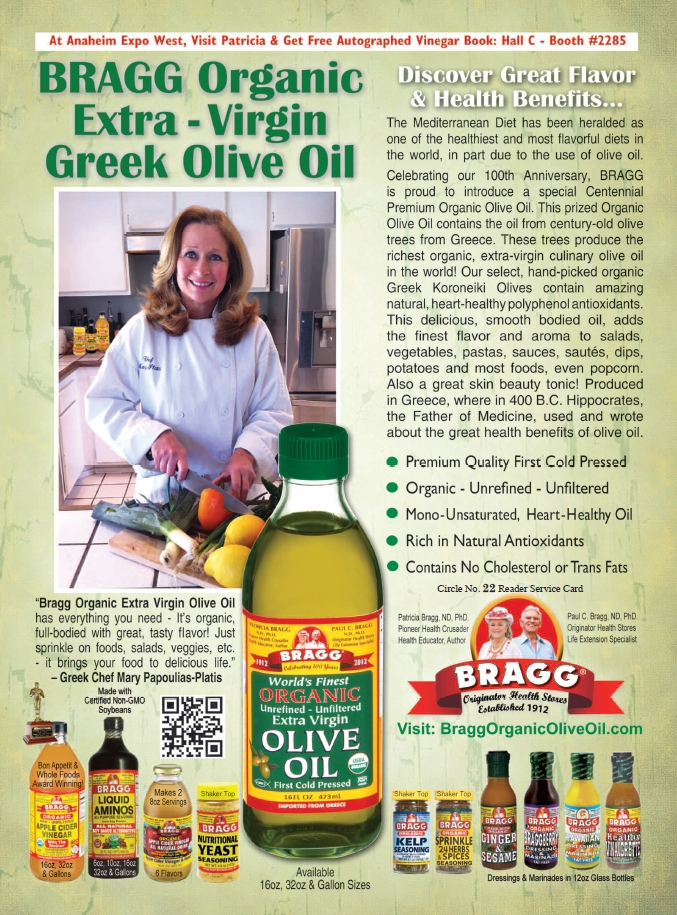 Detrimental to Digestion
Detrimental to Digestion
It’s all well and good to take up the task of improving digestive health by adding to one’s diet, but it may all be for naught if we work against ourselves by committing digestive faux pas. To start off with, it may be difficult, but we have to try to cut down on the junk food that permeates our culture. “Processed foods, foods with artificial preservatives and even sweeteners like sucralose have been shown to disrupt the delicate balance of good and bad bacteria in the gut and make the gut a less efficient metabolic machine,” says Bush.
Another general no-no to be aware of is overconsumption of fat. Although it is necessary to sustain life, eating too much or the wrong types can cause digestive issues (as well as a host of other health problems). Fat is the single greatest stimulant of the digestive tract, and therefore it is the most common trigger food for irritable bowel syndrome (IBS), according to Van Vorous. Fat jumpstarts the gastrocolic reflex upon entering the stomach, which cues the colon to start contracting. Fat causes this response to occur more powerfully than any other type of food, Van Vorous says. “People with IBS do not have a normal gastrocolic reflex response, and their colons tend to spasm irregularly and often violently,” she explains.
High-fat, IBS trigger foods to watch out for, according to Van Vorous, include red meat, poultry, dairy products (even if you’re not lactose intolerant) and (surprise, surprise) fried foods of all types. Watson includes gluten as wel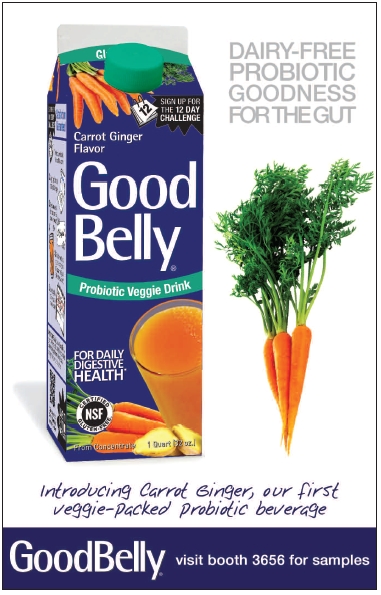 l as dairy among the common enemies of digestion for some individuals; they trigger allergies or sensitivities due to the proteins they contain.
l as dairy among the common enemies of digestion for some individuals; they trigger allergies or sensitivities due to the proteins they contain.
Processed carbohydrates and sugar are two more to watch out for, as they can set one up for dysbiosis, or an imbalanced gut. Morrison agrees about sugar and carbs, stating, “These only feed the negative bacteria, such as Candida (yeast) and will affect both your digestive wellness and your metabolism.”
Bad eating habits, such as eating too close to bed time and eating portions that are too large can likewise be troublesome, says Bush. There’s also the matter of pace. “I advise everyone to slow down. Chew your food thoroughly so that your stomach and digestive enzymes can do their work effectively,” says Watson. She also suggests we focus more attention on the experience of eating, meaning no checking Facebook and no working through lunch. Eating mindfully will lead to healthier diet choices, less eating after one is full, more enjoyment of food and reduced stress (which itself is a drag on digestion). She summarizes: “Just eat.” WF
References
1. H. Van Vorous, Eating for IBS (Da Capo Press, Boston, MA, 2000).
2. G. Mandalari, et al., “Potential Prebiotic Properties of Almond (Amygdalus communis L.) Seeds,” Applied Environ. Microbiol. 74 (14), 4264–4270 (2008).
3. K. Niedzielin, et al., “A Controlled, Double-Blind, Randomized Study on the Efficacy of Lactobacillus plantarum 299v in Patients with Irritable Bowel Syndrome,” Eur. J. Gastroenterol. Hepatol. 13 (10), 1143–1147 (2001).
4. S. Nobaek, et al., “Alteration of Intestinal Microflora is Associated with Reduction in Abdominal Bloating and Pain in Patients with Irritable Bowel Syndrome,” Am. J. Gastroenterol. 95(5), 1231–8 (2000).
5. P. Ducrotté, et al., “Clinical Trial: Lactobacillus plantarum 299v (DSM 9843) Improves Symptoms of Irritable Bowel Syndrome,” World J. Gastroenterol. 18 (30), 4012–4018 (2012).
Published in WholeFoods Magazine, March 2013

